Research: misconceptions about robotics in supply chain management.
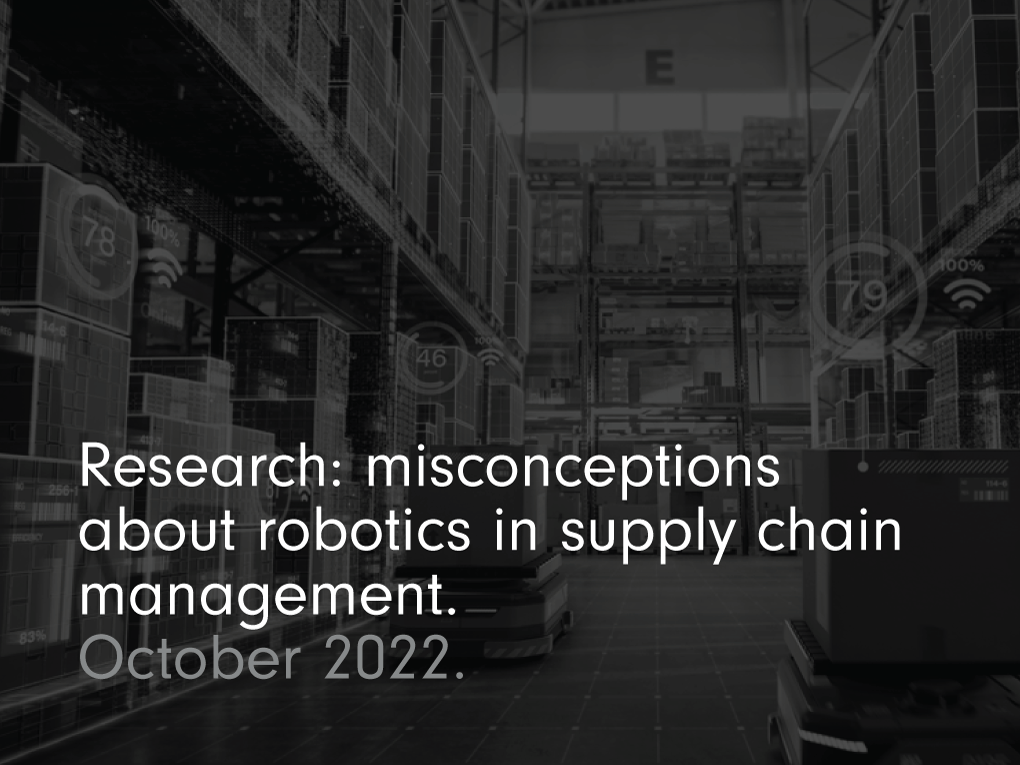
With the recent sharp growth in ecommerce demand coupled with the pressure of staffing shortages, it’s no surprise that the use of robotics in supply chain management is on the rise.
According to the World Robotics 2021 report from the International Federation of Robotics (IFR), expenditure on autonomous mobile robots (AMRs) and delivery robots grew by 11% in 2020 to more than $1 bn (USD).
Despite the rise in adoption, though, robots are not ubiquitous in the supply chain. It seems that there are still a number of misconceptions about them robotics that are preventing their implementation in warehouses.
We wanted to understand the reasons behind these reservations. So, at our E2E Conference 2022, we conducted some research on robotics. The results provide us with a greater understanding of our customer’s attitudes and how they view their warehouse robotics options.
We discovered that much of the hesitancy can be attributed to long-held misconceptions about robotics in supply chain management.
Here, we share our survey results and reflect on our clients’ experiences and beliefs about robot use in warehouses. We also examine the misconceptions about using robots and put those into context with our own research and that of other data on warehouse robotics.
Misconception 1 - robots are an expensive investment.

It seems financially daunting to kit a warehouse out with automation in the form of robots. The notion is that where you want to implement robots to perfectly execute a series of complex operations, it is costly.
This opinion is borne out by our own research. Two-thirds of our respondents agreed that robots are an expensive investment and 41% said this was the single most important factor influencing their decision about deploying robots. Less than 10% disagreed that they are expensive and a quarter were undecided.
But, thanks to increased investment and improvements in technology, robotics costs are declining. The first year of the pandemic saw a near 50% year-on-year increase in investment in robotics companies and together with advances in machine learning and computer vision, robots are becoming progressively more affordable. It’s anticipated that robot costs will drop by half in the next three years.
There are also ways of paying for robotics in supply chain management that make it a much more reasonable expense. For example, many warehouse robot providers offer Robots-as-a-Service (RaaS) as a way of subscribing to – rather than owning – robots. Subscriptions are a growing business model in many sectors, so it’s not surprising that researchers predict that there will be 1.3 million RaaS deployments by 2026, a staggering growth of more than 29,000% over 10 years.
Contact us to find out how much RaaS would cost for your warehouse.
Misconception 2 - robots require a change in warehouse infrastructure.

Just under 42% of our customers believe that to implement robots, you need to change your warehouse infrastructure.
The first generation of warehouse robots were Automated Guided Vehicles (AGVs). These do require additional infrastructure. They follow fixed paths laid out on the floor or are guided by lasers. And Automated Storage and Retrieval Systems (ASRS) consist of fixed tracks, lifts or carousels that are themselves often substantial structures.
But today’s robots – the AMRs – use computer vision to get around. Employing cameras, lidar, radar and touch sensors, they can accurately perceive their surroundings and navigate safely around the warehouse.
In most warehouses, using them requires no fixed infrastructure and no changes. If your aisles are wide enough for a person, then robots can be accommodated without reconfigurations. All that’s required is reliable Wi-Fi across the facility and an integration with your warehouse management system (WMS).
To prove how agile they are and how they can guide themselves without infrastructure changes, get in touch to arrange a visit to see AMRs in action.
Misconception 3 - integrating robots is difficult.
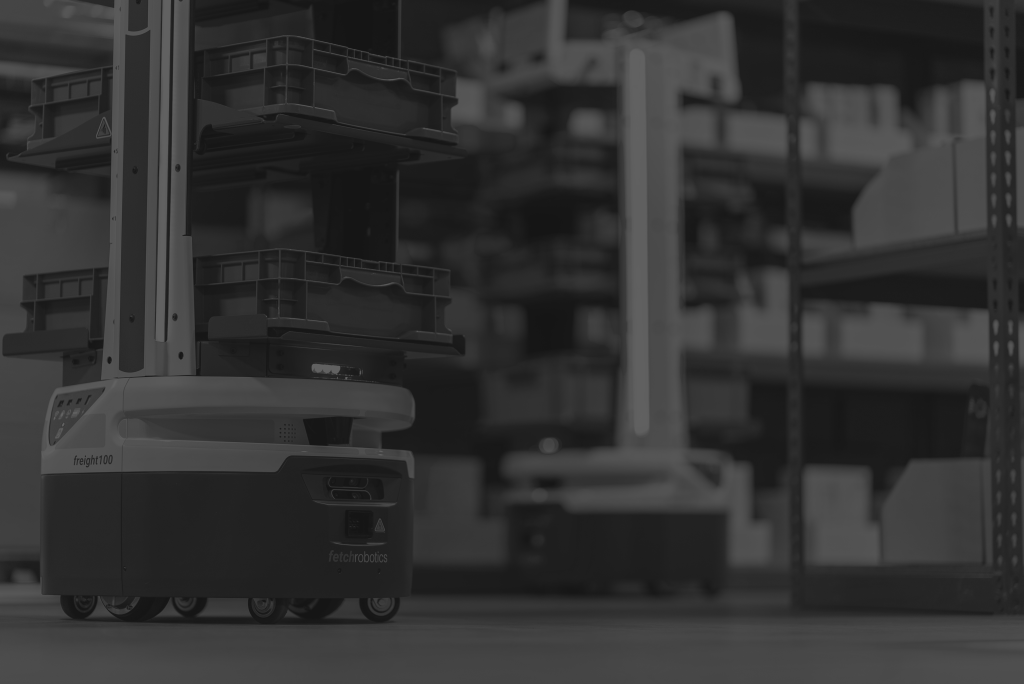
If it’s not cost, one of the main reasons cited for not deploying robots in the warehouse is that it is difficult. This may be why more than 80% of warehouses lack any kind of automation.
A third of our customers are undecided about the topic, so perhaps have not investigated it. A quarter disagreed that it was difficult, but the majority (42%) felt that it is difficult to integrate robots.
But as we have seen, there are no significant infrastructure barriers to the adoption of robots for supply chain management. Robots are simple to deploy, with no need for complex programming. After an integration with your WMS, you map out your warehouse and then set up the workflows you want enacted.
A third of our customers feel that ease of deployment is the factor that would most influence their decision in choosing a robotic solution. A number of robot solutions providers prove feasibility like this by way of their demonstration centres.
Equally, with AMRs, there’s no need to interrupt your daily operations by shutting down your warehouse while you do the actual deployment. They are simple to set up and can be up and running, ready to go in just a few hours.
Contact us to discover how you can quickly deploy robots in your warehouse.
Misconception 4 - robots replace humans, making them redundant.

It’s completely human to be paranoid that robots will one day replace us. And it’s a concern that we note is shared by a third of our customers.
But the nature of our jobs is ever changing. The Luddites that opposed mechanisation in the 19th century were worried for their jobs too. But technological progress has meant manufacture has evolved and today we have more efficient methods of production. Looking back, there’s not many that would welcome a return to those pre-industrialisation days.
The World Economic Forum (WEF) predicted in 2020 that 85 million jobs would be lost to robots worldwide by 2025. And while robots have grown in number and ability, they simply cannot do everything that a human can. So, while they will undoubtedly displace some jobs, not all warehouse roles will be lost to robots.
Interestingly, in the same report, the WEF also predicted that the “robot revolution will create 97 million new jobs.” Technology changes come with a need to adjust and reskill. Humans are still required to manage or work with the robots, creating more openings than those being eliminated.
The use of robotics in supply chain management is typically characterised by collaboration. Collaborative robots – often termed cobots – work alongside warehouse operatives to provide greater efficiency. They enhance the human roles, assisting with the movement of goods, directing operatives by guiding them through workflows and reducing the walking time.
Travel time in the warehouse takes up the largest proportion of human tasks. In many warehouses, it makes up half of the picking process time. With staff costs taking up 50-70% of operating expenditure for warehouse businesses, minimising staffing costs through robot use boosts profits.
But for some warehouses, staffing presents a different problem. With unemployment at its lowest level since 1974, there is real pressure to fill warehouse jobs. Often, warehouse roles are not seen as very attractive, so using robots here to supplement human work makes sense. With their ability to pick and transport a wide range of items, including different sized and shaped bins, totes, cases and pallets, robots are well placed to work alongside humans.
So while the UK’s 1.8 million transportation and storage sector workers may fear the rise of robots in the warehouse, embracing them not only means a simplification of their supply chain tasks, but it also lessens the impact of labour shortages and is beneficial to the business’s bottom line.
Misconception 5 - robots are not a proven investment.
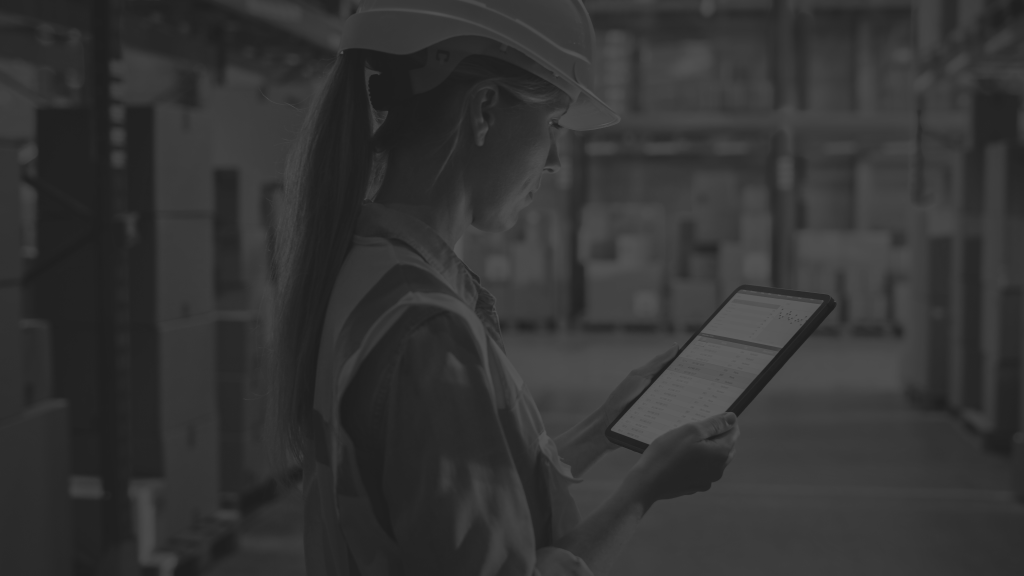
A quarter of our clients believe that robots are not a proven investment. These were all companies that also said their operation was not ready for robots, so their opinions were likely affected by that.
However, without undertaking a return on investment assessment or completing a time and motion study for your facility, you can’t be certain that robots are not a good investment.
Through investigating their requirements, assessing site suitability and calculating ROI, we can determine where robots can bring efficiencies and savings for a company.
Half of our customers would like their warehouse to champion pick performance. So, using robots for their picking could help them to achieve better KPI rates here. Some AMRs deliver a 200-300% boost in picking productivity and can reduce picking costs by 25-40%.
By increasing throughput in the warehouse, robots can deliver a return on investment in 3-6 months, showing that the financial advantages are clear. In our study, most of our customers are sold on the investment potential of robots. Although a quarter of them are still undecided, half disagreed that robots are not a proven investment.
Get in touch for your free ROI calculation to see how much of a return on investment robots can provide for your organisation.
Misconception 6 - robots in the warehouse pose a safety issue
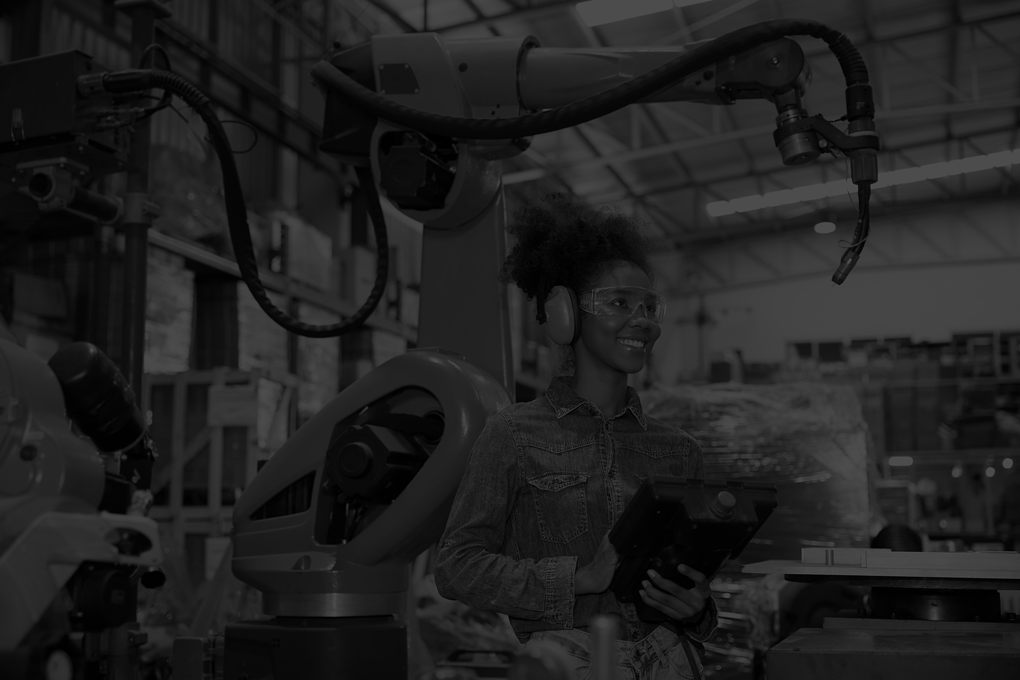
According to the Health & Safety Executive’s publication, Transportation & Storage Stats in GB 2021, an average of 26,000 workers a year sustained non-fatal injuries during 2018-2021. Over a quarter of those (27%) caused the injured party to be absent from work for more than seven days. Specifically within warehouses, 2.8% of workers sustained a workplace injury, which is statistically significantly higher than the rate seen in other industries.
Even though the rate of injuries over the past twenty years is falling, safety remains a vital concern in the warehouse. Worker health and safety is a priority. In fact, according to Logistics Management’s Annual Warehouse and Distribution Center (DC) Equipment Survey, safety is the most important aspect of operations, cited by 84% of respondents.
The results of our own survey don’t support this view when it comes to robots. It’s good to learn that most don’t feel robots pose a safety issue. Only a quarter agreed or were uncertain that robots are a safety issue and 75% disagreed that there is a safety concern with robots.
Equally, safety features didn’t factor as the topmost consideration when choosing robots in any of the responses. While we know our customers view safety as critical to their operation – as do all warehouses – it seems that price and ease of deployment are more important factors in influencing their choices.
To keep up with the high levels of demand they have and to make up for staffing shortages, operatives face increased strain in the warehouse. Robots can alleviate some of this pressure. Plus, with built-in features that allow AMRs to sense and react to their surroundings, these robots can safely work alongside humans, doing much of the lifting and carrying that causes problems for humans, and so reduce the risk of accidents and injuries.
Misconception 7 - our operation is not ready or suitable for robots.

In our survey, less than a fifth of respondents believed both that robots are not suitable for their operation and that they are not yet ready for robots. While these two sentiments may be linked, these respondents had also not yet considered the use of robotics in supply chain management.
This may instead reflect a general lack of knowledge about robots and their different use cases, therefore. In terms of the uses that our customers have for robots, picking was a high priority for more than half of them (58%). All operations need to pick. But of course, there may be barrier to implementing robots for operations that stock large or unwieldy goods. Half of the customers who said their operations are not ready or suitable for robots are those that would also want heavy payload or unit load handling.
This is again a misconception, though. There are lots of different AMRs that can handle pallets, cases and there are even industrial strength robots that manage heavier payloads – in the thousands of pounds.
The future of robotics in supply chain management.
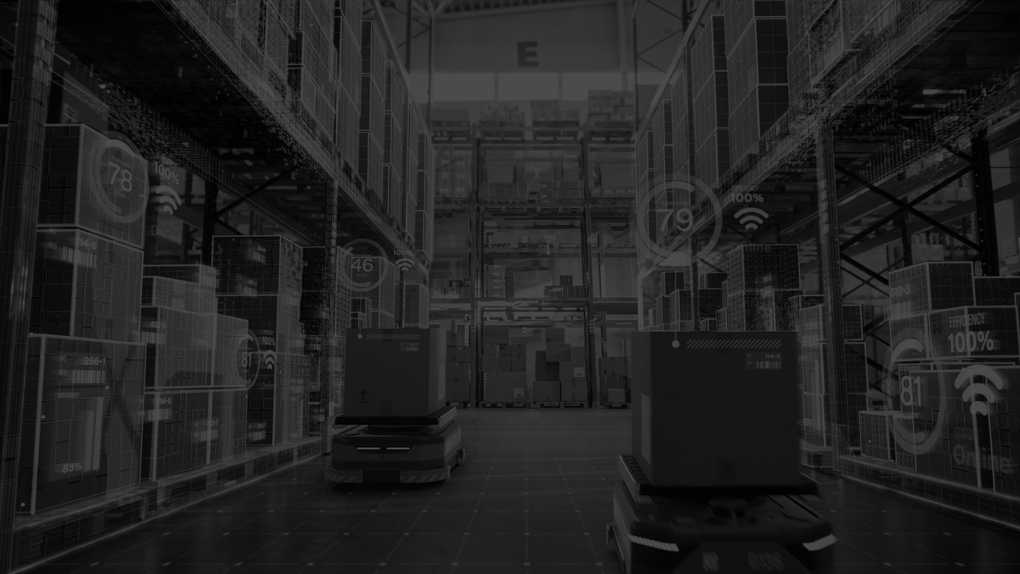
It’s clear to us that robots represent the future for warehouse operations. Those operating warehouses – including some of our own customers – have some misgivings about them. But we hope we have busted some of their misconceptions.
It’s encouraging though that our customers understand how deploying robots can give them a competitive edge. Eighty percent of those with operations that are right for robots can see the value in implementing them and believe too that they will need to consider robots in order to remain competitive.
In terms of use cases across all respondents, our customers would mainly envisage deploying robots for picking (59%) or for case or tote transport (25%). But they also see uses for transportation of heavy payloads and for moving packaging and waste.
While 42% of our customers have not yet considered robots, 33% are currently researching and gathering information and 25% are at the impact analysis stage.
The factors that will influence their choice are mainly price (41%), but also ease of deployment (33%) as well as the ability to try before they buy (17%) and the variety of applications that robots have (8%).
Price is always an important factor for any operation. But robots make you more efficient and productive. One study into robotics in supply chain management states that their impact up to 2025 will bring a 25% to 70% increase in productivity and a reduction in costs of 20% and 40%. In improving efficiency like this, companies can boost their competitiveness.
Technological progress is inevitable, so it’s important that we embrace robots in the supply chain. By implementing them, warehouses can alleviate staffing shortages and can send out more orders, more quickly. With affordable payment models, they deliver an excellent return on investment. Plus, they can quickly be scaled up to meet seasonal peaks.
In exploring some of the misconceptions about robots and demonstrating the greater efficiency and productivity they deliver, we hope to have shown that they can help bring greater profitability and faster growth for your warehouse operation.
For more information about deploying robots in your warehouse, different payment options, or for a full feasibility assessment, contact us today.